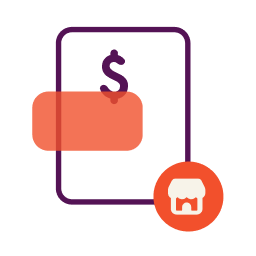There are a variety of payment options that you as a small business owner, could provide to your customers for convenience in acquiring your products and services. By far the most popular forms of payment include:
- Credit Cards;
- Debit Cards;
- Checks;
- Bank Transfers;
- And even cash.
Despite the many reports stating that cash is dead, cash still represents at least 30% of all transactions conducted at the point of sale. This is in part due to the significant amount of unbanked or underbanked individuals in the US. Over 40% don’t have a credit card, 20% don’t have a debit card, and nearly 18 million have no bank account.
The Unbanked and Underbanked
Speaking of unbanked and underbanked customers, many businesses with high average ticket prices on their products or services (generally speaking, from $500 – $2,000 and up) experience situations in which customers delay necessary purchases because they are underbanked.
Many of these customers just do not have the credit lines available or the available amount in their checking accounts to cover the transaction. This leads to these businesses either losing the customer, or the business creates their own in-house financing program, which which can be a risky venture if the customer doesn’t remit full payment over time.
Introducing Consumer Retail Finance
Fortunately, there is a new payment method available in the form of consumer financing, which can be utilized in these situations. “Consumer financing”, “customer financing”, or “retail financing” programs allow for you (the merchant) to provide customers an affordable monthly plan to finance transactions, with loan approvals that take place within minutes at the point of sale.
Known as consumer retail financing, this is a niche form of financing that allows you as a merchant to instantly provide a way for your customers to finance their purchase, allowing them to apply for a 6 – 24 month installment loan within minutes at checkout to finance the purchase of your products or services. This form of financing comes with a fee upfront and/or a monthly service fee charged to the merchant. This program has a number of benefits, including, but not limited to:
- Risk management: Many merchants do their own in-house financing for customers, where they will extend terms to a customer so that they have anywhere from 30 days to 24 months to pay off a product or service. The only issue with this method is that if the customer falls behind on payments or doesn’t complete payment at all, the loss of revenue is assumed by the merchant. With consumer retail financing, that risk is no longer on your business, but on the organization that financed your customer.
- Increase sales and number of customers: As a merchant, you could use consumer retail financing as a marketing tool to attract more customers to the business through the promotional financing offers that are provided. The program also attracts customers who find it less stressful to able to spread out the costs of your service over a number of payments, without the need to have a stellar credit rating.
- A competitive advantage: The program also gives your organization an upperhand on your competition. Many of your competitors many not be offering said financing options for customers and thus have to turn away customers.
How Consumer Retail Financing Platforms Are Structured
Here’s how many consumer retail finance platforms are structured:
- The platform will usually partner with various financial services organizations to bring forth multiple solutions under one platform. For example, they might have partnerships with traditional banks, credit unions, alternative loan companies, leasing companies, rent-to-own companies, and more.
- At the point of sale, the customer will fill out one quick application and the system will determine the best program to recommend to the customer based on their risk profile. The details are provided once the “approval” notification is displayed, allowing the customer to then make the decision to sign on for the program or not.
- Some retail finance platforms allow your business to make money on the loans provided as well, by marking up the interest rates and costs that are being provided to your customer.
- Once a customer accepts a loan option and electronically signs the paperwork, they’ll usually get a receipt, then you are then authorized to proceed with providing the customer the products or services that they are looking for. Within about 24 – 72 hours, the amount of the purchase is deposited into your bank account. The finance company then begins to deduct the agreed upon payments from your customer’s bank account for the loan transaction.
Consumer retail financing can be a great way to keep customers in your shop, or attract new customers that need your goods or services with a more flexible way to pay. But keep in mind that this isn’t for everyone. You need to carefully consider the cost to your business, not only in fees charged by the financing provider, but the setup cost of implementing your retail financing program. Some programs have financing minimums, where your products have to be above a certain amount before the financing company will consider financing the purchase. Additionally, you know your customers best—consider whether this is a service they would use, if the cost of financing is reasonable for them.
This article was originally written on June 22, 2017 and updated on November 12, 2020.



Consumer financing/retail financing is definitely a great way for merchants who sell expensive goods or services to increase sales. There have been a lot of innovations in this niche space recently. This sentence is actually no longer true: “This form of financing comes with a fee upfront and/or a monthly service fee charged to the merchant.”
Companies like Blispay (https://blispay.com) enable merchants to offer customers financing without adding costs above and beyond standard credit card processing fees. Thanks to companies like Blispay, it’s easier than ever for merchants across various verticals and channels to improve customer satisfaction and increase sales with retail financing.